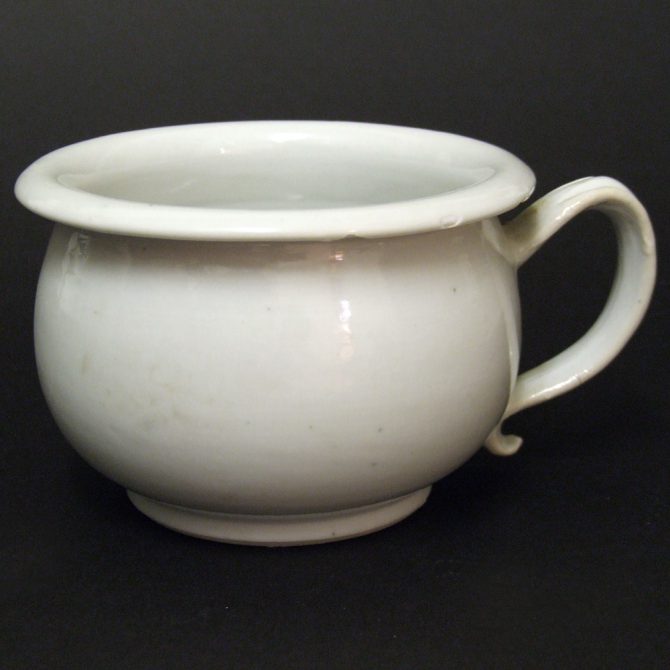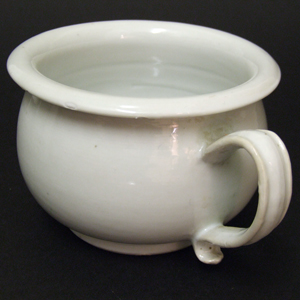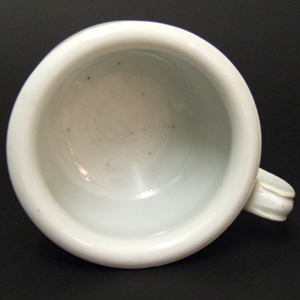
NANKING CARGO c.1750 Chinese Export Porcelain
A Small Chinese Export Porcelain Vomit Pot (Spuigpotjes) From Wreck of the Geldermalsen, Sold as `The Nanking Cargo`, Qianlong Period c.1750. The Enamelled Decoration of Tree Peony and Bamboo, Now Missing Except for a Feint Shadow.
- Condition
- No damage, enamels totally degraded, minor glaze degradation due to immersion in the sea. Small glaze chips to the rim.
- Size
- Diameter including the handle : 15.6cm (6 inches).
- Provenance
- The Nanking Cargo, Chinese Export Porcelain and Gold. Christie`s Amsterdam (28th April-2nd of May 1986). Part lot 1208. The Collection of Henry Woods-Wilson.
- Stock number
- 21994
Information
The Geldermalsen :
The Geldermalsen built in 1746 was one of the newest and finest Dutch East Indiamen. It is one hundred and fifty feet long and forty-two feet wide. Captain Jan Morel, 33 years old, his many Dutch sailors and sixteen Englishmen set sail from Canton. On Monday January 3rd 1752 the Geldermalsen on its way to Holland hit a reef and sank. The survivors struggle on in a barge and long boat and reach Batavia in eight days. The wreck held a most valuable cargo of tea, as well as Chinese silks and textiles. All now lost. The vast porcelain cargo, as well as gold has survived. Tea was the real reason for the journey, ceramics accounting for only five per cent of the total value. The loss of the Geldermalsen cost the Dutch East India Company 900.000 guilders. However the porcelain from the sister ship the Amstelveen sold for far more than normal because it now carried all the porcelain to be sold in Holland that year.
Vomit Pots :
Vomit pots were not a major part of the V.O.C. cargo as they were fragile and had to be wrapped carefully to ensure the rims and handles were not chipped. Vomit pots or Spuigpotjes in Dutch were ordered by the V.O.C. each year during the 1740`s but five years later in 1751 specific instructions went out that none should be ordered. Jorg suggests the larger vomit pots, that were made over a much longer period of time, were easier to acquire as they came from regular stock in Canton. Information from : The Hatcher Porcelain Cargoes, The Complete Record. Colin Sheaf and Richard Kilburn, Phaidon 1988 (ISBN 0-7148-80469) pages 134 and 135.
SOLD

